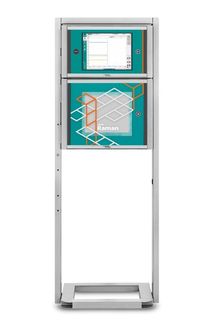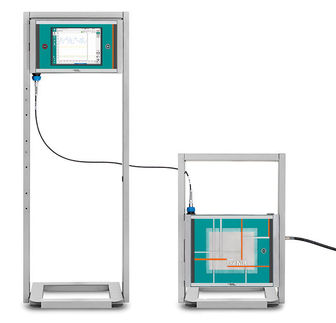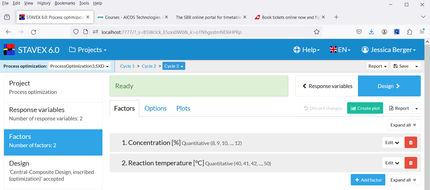Erythema nodosum
Classification & external resources
|
|
| ICD-10
| L52.
|
| ICD-9
| 695.2, 017.1
|
| DiseasesDB
| 4461
|
| MedlinePlus
| 000881
|
| eMedicine
| derm/138
|
Erythema nodosum (EN) (red nodules) is an inflammation of the fat cells under the skin (panniculitis). It causes tender, red nodules that are usually seen on both shins. EN is an immunologic response to a variety of different causes.
Clinical manifestations
Erythema nodosum occurs 3-6 weeks after an event, either internal or external to the body, that initiates a hypersensitivity reaction in subcutaneous fat [1][2]. EN is frequently associated with fever, malaise, and joint pain and inflammation. It presents as tender red nodules on the shins that are smooth and shiny. The nodules may occur anywhere there is fat under the skin, including the thighs, arms, trunk, face, and neck [3][4]. The nodules are 1-5 cm in diameter, and individual nodules may coalesce to form large areas of hardened skin.
As the nodules age, they become bluish purple, brownish, yellowish, and finally green, similar to the color changes that occur in a resolving bruise. The nodules usually subside over a period of 2–6 weeks without ulceration or scarring[5].
Dermatophytids are similar skin lesions that result from a fungus infection such as ringworm in another area of the body.
Diagnosis
Diagnosis is clinical. A deep punch biopsy or an incisional biopsy may be performed in cases where the diagnosis is unclear. Microscopic examination will reveal a septal panniculitis with acute and chronic inflammation in the fat and around blood vessels[5].
Once EN is diagnosed, additional evaluation needs to be performed to determine the underlying cause. A complete blood count, erythrocyte sedimentation rate (ESR), antistreptolysin-O (ASO) titer, urinalysis, throat culture, intradermal tuberculin test, and chest x-ray is part of the initial examination.[6]
The ESR is initially very high, and falls as the nodules fade. The ASO titer is high in cases associated with a streptococcal throat infection. A chest X-ray should be performed to rule out pulmonary diseases. Hilar lymphadenopathy may be due to tuberculosis, sarcoidosis, or Löfgren syndrome (a form of acute sarcoidosis with erythema nodosum , parotid swelling and bilateral hilar adenopathy, often accompanied by joint symptoms).
Epidemiology
Erythema nodosum is the most common form of panniculitis (inflammation of the subcutaneous fat). The peak incidence of EN occurs between 20-30 years of age. Women are 3-6 times more commonly affected than men[5].
Causes
In about 30-50% of cases, the cause of EN is unknown.[7] EN may be associated with a wide variety of diseases, including infections (e.g., tuberculosis, streptococcal, Mycoplasma pneumoniae, and Epstein-Barr virus), sarcoidosis, inflammatory bowel disease, autoimmune disorders (e.g., Behçet's disease), pregnancy, medications (sulfonamides, oral contraceptives, bromides), and cancer.[7][8][9][10]
Treatment
Treatment should focus on the underlying cause. Symptoms can be treated with bedrest, leg elevation, compressive bandages, wet dressings, and nonsteroidal anti-inflammatory agents (NSAIDs).[5] NSAIDS are usually more effective at the onset of EN versus with chronic disease.
Potassium iodide can be used for persistent lesions whose cause remains unknown. Corticosteroids and colchicine can be used in severe refractory cases (Yurdakul et al, 2001).[11][12][13]
References
- ^ Ryan TJ (1998). "Cutaneous vasculitis", in Burns DA, Breathnach SM: Textbook of Dermatology, 6th ed., London: Blackwell Science Ltd, 2155-225. ISBN 0-632-05064-0.
- ^ Camilleri MJ, Su WPD (2003). "Panniculitis", in Freedberg IM, Eisen AZ, Wolff K, Austen KF, Goldsmith LA, Katz SI: Fitzpatrick's Dermatology In General Medicine, 6th ed., New York, NY: McGraw-Hill. ISBN 0-07-138076-0.
- ^ Cribier B, Caille A, Heid E, Grosshans E (1998). "Erythema nodosum and associated diseases. A study of 129 cases". Int J Dermatol 37 (9): 667-72. PMID 9762816.
- ^ White WL, Hitchcock MG (1999). "Diagnosis: erythema nodosum or not?". Semin Cutan Med Surg 18 (1): 47-55. PMID 10188842.
- ^ a b c d Wolff K, Johnson RA, Suurmond R (2005). "Section 7: Miscellaneous inflammatory disorders", Fitzpatrick's Color Atlas & Synopsis of Clinical Dermatology, 5th ed., New York, NY: McGraw-Hill Professional. ISBN 0-07-144019-4.
- ^ Garcia-Porrua C, Gonzalez-Gay MA, Vazquez-Caruncho M, Lopez-Lazaro L, Lueiro M, Fernandez ML, Alvarez-Ferreira J, Pujol RM (2000). "Erythema nodosum: etiologic and predictive factors in a defined population". Arthritis Rheum 43 (3): 584-92. PMID 10728752.
- ^ a b Mert A, Ozaras R, Tabak F, Pekmezci S, Demirkesen C, Ozturk R (2004). "Erythema nodosum: an experience of 10 years". Scand J Infect Dis 36 (6-7): 424-7. PMID 15307561.
- ^ Anan T, Imamura T, Yokoyama S, Fujiwara S (2004). "Erythema nodosum and granulomatous lesions preceding acute myelomonocytic leukemia". J Dermatol 31 (9): 741-7. PMID 15628321.
- ^ Bohn S, Buchner S, Itin P (1997). "[Erythema nodosum: 112 cases. Epidemiology, clinical aspects and histopathology]". Schweiz Med Wochenschr 127 (27-28): 1168-76. PMID 9324739.
- ^ Lin JT, Chen PM, Huang DF, Kwang WK, Lo K, Wang WS (2004). "Erythema nodosum associated with carcinoid tumour". Clin Exp Dermatol 29 (4): 426-7. PMID 15245549.
- ^ Mat C, Yurdakul S, Uysal S, Gogus F, Ozyazgan Y, Uysal O, Fresko I, Yazici H (2005). "A double-blind trial of depot corticosteroids in Behcet's syndrome". Rheumatology (Oxford). PMID 16263779.
- ^ Wallace SL (1967). "Erythema nodosum treatment with colchicine". JAMA 202 (11): 1056. PMID 6072607.
- ^ Yurdakul S, Mat C, Tuzun Y, Ozyazgan Y, Hamuryudan V, Uysal O, Senocak M, Yazici H (2001). "A double-blind trial of colchicine in Behcet's syndrome". Arthritis Rheum 44 (11): 2686-92. PMID 11710724.
| Diseases of the skin and subcutaneous tissue (integumentary system) (L, 680-709) |
|---|
| Infections | Staphylococcus (Staphylococcal scalded skin syndrome, Impetigo, Boil, Carbuncle) - Cellulitis (Paronychia) - Acute lymphadenitis - Pilonidal cyst - Corynebacterium (Erythrasma) |
|---|
| Bullous disorders | Pemphigus - Pemphigoid (Bullous pemphigoid) - Dermatitis herpetiformis |
|---|
| Dermatitis and eczema | Atopic dermatitis - Seborrhoeic dermatitis (Dandruff, Cradle cap) - Diaper rash - Urushiol-induced contact dermatitis - Contact dermatitis - Erythroderma - Lichen simplex chronicus - Prurigo nodularis - Itch - Pruritus ani - Nummular dermatitis - Dyshidrosis - Pityriasis alba |
|---|
| Papulosquamous disorders | Psoriasis (Psoriatic arthritis) - Parapsoriasis (Pityriasis lichenoides et varioliformis acuta, Pityriasis lichenoides chronica) - Pityriasis rosea - Lichen planus - Pityriasis rubra pilaris - Lichen nitidus |
|---|
| Urticaria and erythema | Urticaria (Dermatographic urticaria, Cholinergic urticaria) - Erythema (Erythema multiforme, Stevens-Johnson syndrome, Toxic epidermal necrolysis, Erythema nodosum, Erythema annulare centrifugum, Erythema marginatum) |
|---|
| Radiation-related disorders | Sunburn - Actinic keratosis - Polymorphous light eruption - Radiodermatitis - Erythema ab igne |
|---|
| Disorders of skin appendages | nail disease: Ingrown nail - Onychogryposis - Beau's lines - Yellow nail syndrome
hair loss: Alopecia areata (Alopecia totalis, Alopecia universalis, Ophiasis) - Androgenic alopecia - Telogen effluvium - Traction alopecia - Lichen planopilaris - Trichorrhexis nodosa
other follicular disorders: Hypertrichosis (Hirsutism) - Acne vulgaris - Rosacea (Perioral dermatitis, Rhinophyma) - follicular cysts (Epidermoid cyst, Sebaceous cyst, Steatocystoma multiplex) - Pseudofolliculitis barbae - Hidradenitis suppurativa
sweat disorders: eccrine (Miliaria, Anhidrosis) - apocrine (Body odor, Chromhidrosis, Fox-Fordyce disease) |
|---|
| Other | pigmentation (Vitiligo, Melasma, Freckle, Café au lait spot, Lentigo/Liver spot) - Seborrheic keratosis - Acanthosis nigricans - Callus - Pyoderma gangrenosum - Bedsore - Keloid - Granuloma annulare - Necrobiosis lipoidica - Granuloma faciale - Lupus erythematosus - Morphea - Calcinosis cutis - Sclerodactyly - Ainhum - Livedoid vasculitis |
|---|
| see also congenital (Q80-Q84, 757) |
|







